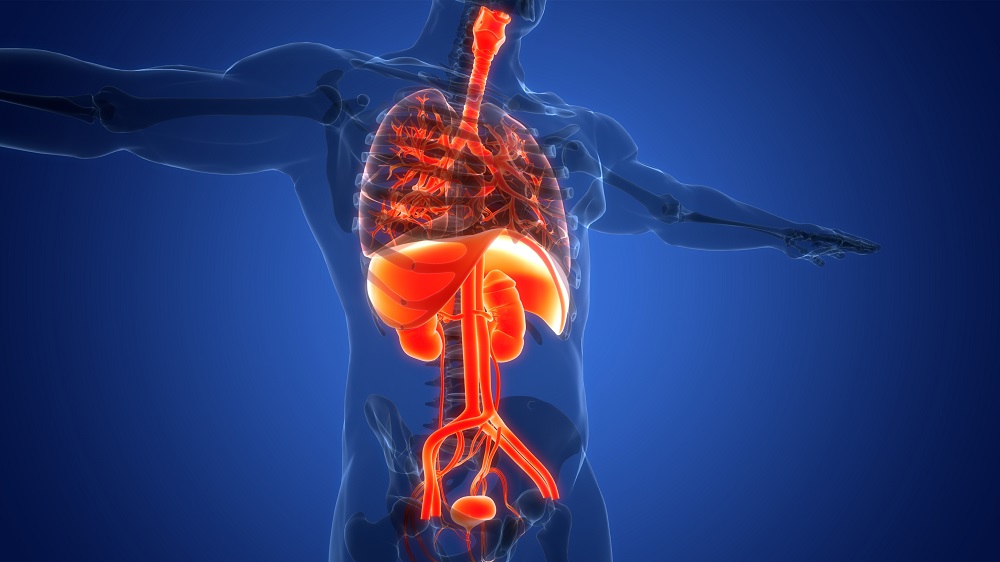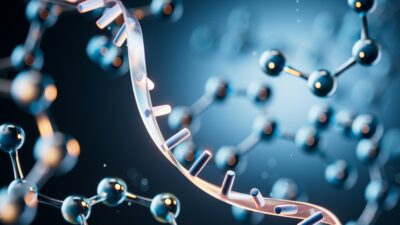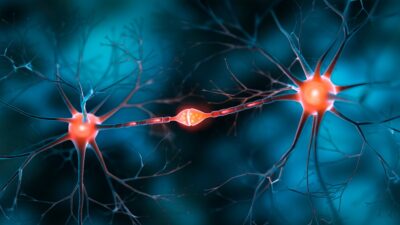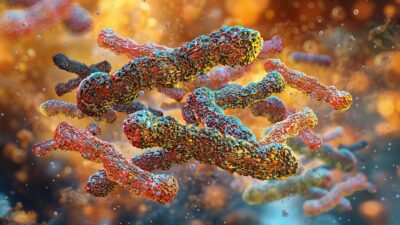Organ-Specific Aging Analysis Reveals Disease Connections
- A youthful brain and immune system are key to longevity.

A recent study explored the differences in the speed of organ aging. The researchers have built models that can predict the odds of diseases and mortality risk based on organ-specific proteins found in plasma [1].
Not all organs age equally
Since each organ in the human body is different, the way they age also differs, with some ceasing to function properly early in life, such as the female reproductive system. Monitoring organ health and developing interventions to improve individual organs may be a viable approach to extend healthspan and lifespan.
In this study, the researchers estimated the biological age of 11 organs: adipose tissue, artery, brain, heart, immune tissue, intestine, kidney, liver, lung, muscle, and pancreas. They used data from the UK Biobank, analyzing almost 3,000 proteins found in the plasma of over 44,000 people between the ages of 40 and 70 years.
First, they defined which plasma proteins were likely to be derived from a specific organ. Based on this data, they trained models to predict participants’ biological age for each organ separately. Their results suggested organ-specific differences in biological age that were only weakly correlated with each other, implying that organs age at different rates.
Organ age estimates allowed the researchers to predict future diseases in specific organs, including highly significant associations between heart aging and atrial fibrillation (irregular and rapid heart rhythms) and heart failure, pancreatic aging and kidney aging with chronic kidney disease, brain aging with Alzheimer’s disease, and lung aging with chronic obstructive pulmonary disease (COPD).
“We’ve developed a blood-based indicator of the age of your organs,” said Tony Wyss-Coray, PhD, professor of neurology and neurological sciences and director of the Knight Initiative for Brain Resilience. “With this indicator, we can assess the age of an organ today and predict the odds of your getting a disease associated with that organ 10 years later.”
An extremely young brain is protective against dementia
Since the organs didn’t age at the same speed, the researchers turned to look at ‘extreme organ agers’ who had one or more organs that aged much faster along with another group of people who had extremely youthful organs.
Extreme agers of 2 to 4 organs had a significantly elevated risk for every disease examined by the researchers. On the other side, people who had between 2 and 4 extremely youthful organs were protected from many diseases.
The researchers evaluated the speed of brain aging and Alzheimer’s association more deeply. They learned that extreme brain aging led to a 3.1-fold increase in the risk of Alzheimer’s disease. In contrast, an extremely young brain reduced the risk by 74% independent of age, sex, APOE4 (a strong genetic risk factor for Alzheimer’s), and APOE2 (a genetic variant linked to lower Alzheimer’s risk). As they conclude in the paper, “individuals with aged brains exhibited a 13.5-fold increased risk of developing Alzheimer’s disease compared to those with youthful brains.”
To put this risk in perspective, the researchers compared it to the APOE genotype. The risk of developing Alzheimer’s for a person with an aged brain was similar to carrying one copy of APOE4. In contrast, a youthful brain was as protective as carrying two copies of APOE2. Brain age was very weakly correlated with APOE genotype.
The brain as a central lifespan regulator
The researchers also found a link between organ biological age and mortality risk, with brain aging having the most potent predictive properties, “suggesting that the brain may be a central regulator of lifespan in humans“.
The researchers note an association between each organ age and the risk of death. An aged single organ was associated with a 1.5- to 3-fold increased risk of death, and having more aged organs led to an even higher risk of death. Having 2-4, 5-7, or 8+ extremely aged organs was associated with a 2.3-fold, 4.5-fold, and 8.3-fold increased risk of death, respectively.
Surprisingly, youthful organs were not protective regarding mortality risk, and the researchers were not clear about the reasons behind this. They suggest that the sample size might have been too small to see statistically significant differences.
A significant reduction in mortality risk was observed only in participants with youthful brains and immune systems. This brain- and immune-system-related longevity was probably due to the preservation of the brain extracellular matrix, which was caused by reduced degradation by peripheral inflammatory factors and reduced chronic inflammation.
“The brain is the gatekeeper of longevity,” Wyss-Coray said. “If you’ve got an old brain, you have an increased likelihood of mortality. If you’ve got a young brain, you’re probably going to live longer.”
This seems unsurprising, given that the brain regulates many age-related bodily functions, such as circadian rhythms, blood pressure, energy homeostasis, and stress response. The immune system is also linked to aging processes, with a strong role of chronic inflammation in aging.
Lifestyle matters for organ aging
The researchers tested 18 lifestyle factors, such as diet, alcohol, smoking, exercise, and insomnia; socioeconomic factors, including education and the Townsend Deprivation Index, a metric of material deprivation; and 137 drugs and supplements, adjusted for each other, age, and sex.
The researchers reported an association between age acceleration across several organs and smoking, alcohol, processed meat intake, the Townsend Deprivation Index, and insomnia. Youthful organs were found to be associated with vigorous exercise, oily fish consumption, poultry consumption, and higher education. Premarin, ibuprofen, glucosamine, cod liver oil, multivitamins, and vitamin C were significantly associated with youth in at least two organs.
Premarin’s association was especially interesting, since Premarin is an estrogen medication used by women experiencing postmenopausal symptoms. Observing this, the researchers asked whether the timing of menopause might impact organ aging, thus affecting lifespan and disease risk. Among the small sample of women they were able to analyze, they noted an association between earlier menopause and accelerated aging across most organs, while estrogen treatment was associated with youthful immune, liver, and artery profiles.
Preventing organ-specific diseases
The researchers would like to expand on this topic by, for example, defining the sequence of organ aging for individuals and on the population level. It would also be interesting to delve deeper into sex-specific differences since the data showed that men had older kidneys, immune systems, and intestines than women, while women’s adipose tissue, arteries, and hearts were older than men’s.
The authors hope that these tools can help to monitor organ health and to test organ-specific medical interventions that could expand longevity. “This approach could lead to human experiments testing new longevity interventions for their effects on the biological ages of individual organs in individual people,” Wyss-Coray said.
Literature
[1] Oh, H. S., Le Guen, Y., Rappoport, N., Urey, D. Y., Farinas, A., Rutledge, J., Channappa, D., Wagner, A. D., Mormino, E., Brunet, A., Greicius, M. D., & Wyss-Coray, T. (2025). Plasma proteomics links brain and immune system aging with healthspan and longevity. Nature medicine, 10.1038/s41591-025-03798-1. Advance online publication.








